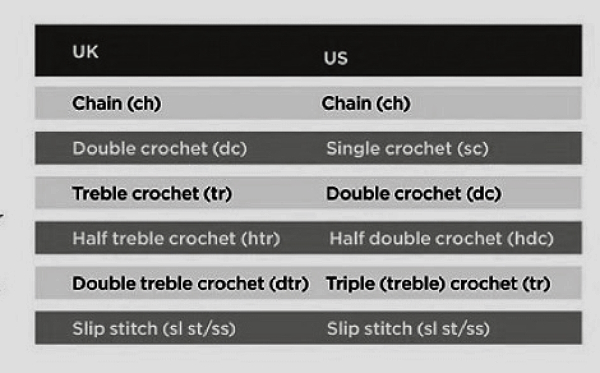How to Read a Crochet Pattern.
Most crochet projects are made by following a pattern. Although patterns may seem daunting at first, they become easy to read once you understand the terms. When you’ve decided on your first crochet project, whether it’s a simple scarf or an amigurumi character, you will most likely follow a pattern to create it. Patterns provide instructions on which stitches to use and how to combine them to make your item. You can find crochet patterns in various places, including in this book (see page 82).
Since crochet patterns are written in shorthand, they may look like meaningless lists of jumbled letters to the untrained eye. However, once you’ve mastered the terms, they become quite accessible. This shorthand style saves space on the page and makes patterns easier to follow. Instead of a long list of words where you might easily lose your place, patterns are concise and straightforward to read. All patterns follow the same conventions, so once you’ve learned how to read one, you’ll be able to understand any pattern you encounter. Read on to learn all about crochet patterns.
Starting Instructions
At the top of a stitch pattern, you’ll usually find important information you need to know before starting. This includes the size of the hook you’ll need, the recommended yarn weight, and the tension. There may also be details about any special stitches required and any uncommon abbreviations.
To begin your pattern, the first instruction is usually to create a foundation chain (for working in rows) or a chain circle or magic ring (for working in the round). If you are not working to exact measurements, you may be instructed to make a foundation chain in a multiple. This ensures that any repeats don’t get cut off halfway through when you come to the end of a row, along with a small number of stitches for the turning chain. For example, “ch a multiple of 6 sts plus 3” means you need to chain any multiple of six (6, 12, 18, 24, etc.) plus three more chains at the end for the turning chain.
Rows and Rounds
Crochet is always worked either in rows or rounds, and patterns give you instructions for what to do in each row or round. They will be numbered (Row 1, Row 2, or Rnd 1, Rnd 2, etc.) to help you keep your place. At the end of each instruction, the number of stitches you should have worked in that round/row will be given. If you have crocheted more or fewer stitches than specified, you’ll know a mistake has been made, giving you a chance to correct it before moving on.
Working into Specific Stitches
A pattern will not only tell you which stitch to make next but also where to make it. For example, “dc in next st” means double crochet in the next stitch. If it says to work multiple stitches into a specific number of stitches, you need to crochet the same stitch as many times as indicated. For example, “2 tr in next 2 sts” means making two treble crochets in the next stitch and two treble crochets in the following stitch, for a total of four stitches made.
When different stitch types are given in brackets, make all the stitches in the specified stitch. For example, “(tr, ch, tr) in next st” means make a treble crochet in the next stitch, then chain, then treble crochet in the same stitch as the first treble crochet.
If a pattern asks you to work a stitch into a specific stitch, skip all the ones that come before and work it into the specified stitch. For example, “dc in next htr” means double crochet in the next half treble crochet, no matter what comes before it in the row. If you see “ch-sp,” insert your hook in the space underneath a loop created by a chain in the row below.
Repeats
Repeated instructions in patterns are identified either using brackets or an asterisk (or other symbols), followed by an instruction on how many times they should be repeated. For example, “(2 dc in next st, tr in next st) 4 times” means to follow the sequence inside the brackets four times. Instructions with an asterisk, like “tr in next 4 chs, ch 2, sk next 2 chs; rep from * 3 times,” mean to repeat the sequence from the asterisk to the semicolon the specified number of times.
Repeated instructions can also direct that they be worked until the end of the row or until the last few stitches. For example, “3 tr in next st, ch 2, dc in next st; rep from * across to last 2 sts, tr in last 2 sts” means to repeat the sequence between the asterisk and semicolon until you reach the last two stitches of the row, then follow the final instructions.
Multiple Sizes
A pattern may offer multiple sizes, especially for items for infants and young children. The smallest size information is given first, with the rest in brackets. For example:
Size: Small (medium, large)
ch 40 (48, 56)To make the smallest item, follow the first instruction. For the medium size, follow the first instruction inside the brackets. For the largest size, follow the second instruction inside the brackets. Ensure you follow the correct instructions to avoid an ill-fitting garment.

See Free Crochet Patterns
Visit Crochet Kingdom for thousands of free crochet patterns.